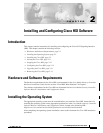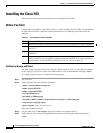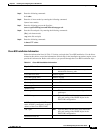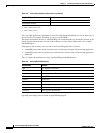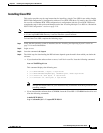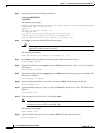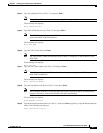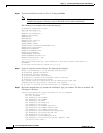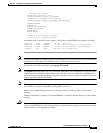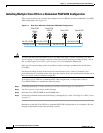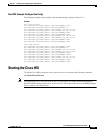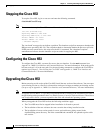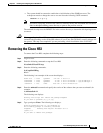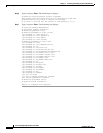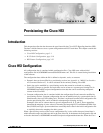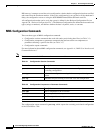
2-9
Cisco H.323 Signaling Interface User Guide
OL-4806-01 Rev. A14
Chapter 2 Installing and Configuring Cisco HSI Software
Installing the Cisco HSI
[ verifying class <script> ]
## Executing postinstall script.
Installed package instance is: OTTgw000
Installation of <OTTgw000> was successful.
Installed package instance environment variables are:
-----------------------------------------------------
PKGINST=OTTgw000
VERSION=4.1
BASEDIR=/opt/GoldWing/4.1
GWHOME=/opt/GoldWing
MGCUSR=mgcusr
MGCGRP=mgcgrp
-----------------------------------------------------
Setting link /opt/GoldWing/currentPM.
Setting link /opt/GoldWing/currentGW.
Installation of the Cisco HSI is now complete. The directory /opt/GoldWing now displays as follows:
drwxr-xr-x 7 cisco sysadmin 512 Jan 9 18:31 4.1
lrwxrwxrwx 1 cisco sysadmin 19 Jan 9 18:31 currentGW -> /opt/GoldWing/4.1
lrwxrwxrwx 1 cisco sysadmin 19 Jan 9 18:31 currentPM -> /opt/GoldWing/4.1
-rwxrwxr-x 1 root other 3053 Jan 9 18:31 uninstall.sh
Note The links currentPM and currentGW point to the currently active version of the Cisco HSI. The uninstall
script has been copied here for convenience, but it can be run only by root user.
To check the Cisco HSI installation, enter pkgchk OTTgw000.
Note The pkgchk command reports File size / Checksum information. This information may suggest errors
because the post-installation scripts modify some of the files with user configuration information for
which the user was prompted during the installation procedure. These messages are expected and do not
indicate a problem with the installation.
Note The package name is OTTgw000. If more than one instance of the package is installed, the package name
has a suffix (for example, OTTgw000.2, OTTgw000.3, and so on).
Outside of the /opt/GoldWing directory, the start/stop script CiscoGW is copied to the /etc/init.d
directory.
When the installation is complete, a file named PKINST is written to the base directory on the installed
software.
Caution Do not modify the PKINST file. It contains information derived from the installation, and the uninstall
script uses the PKINST file in the version directory to determine which package name to remove if more
than one instance of the package is installed.



